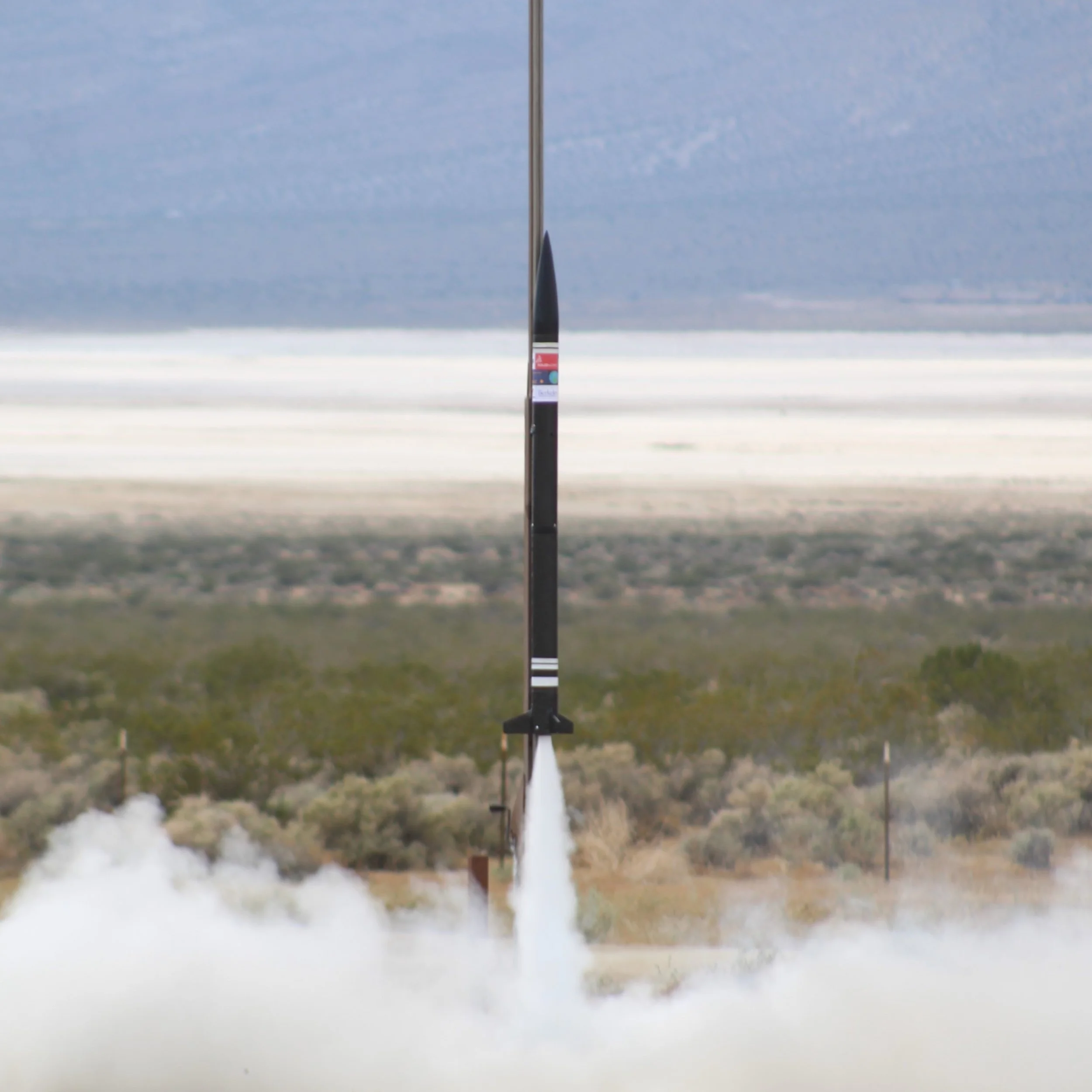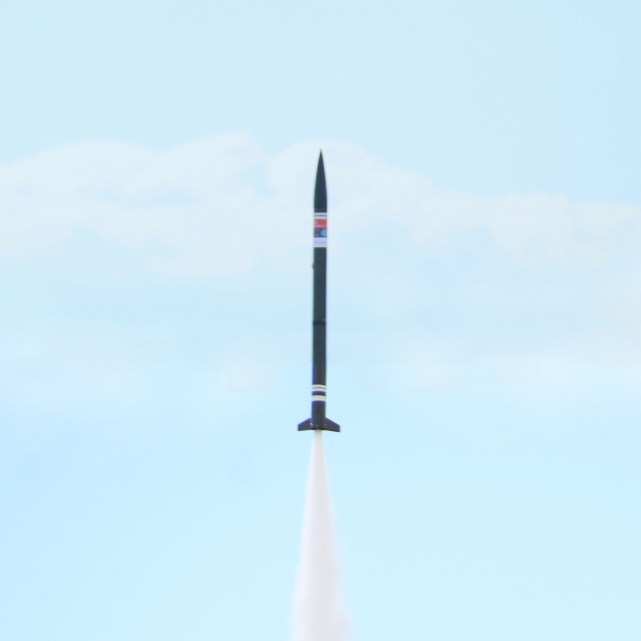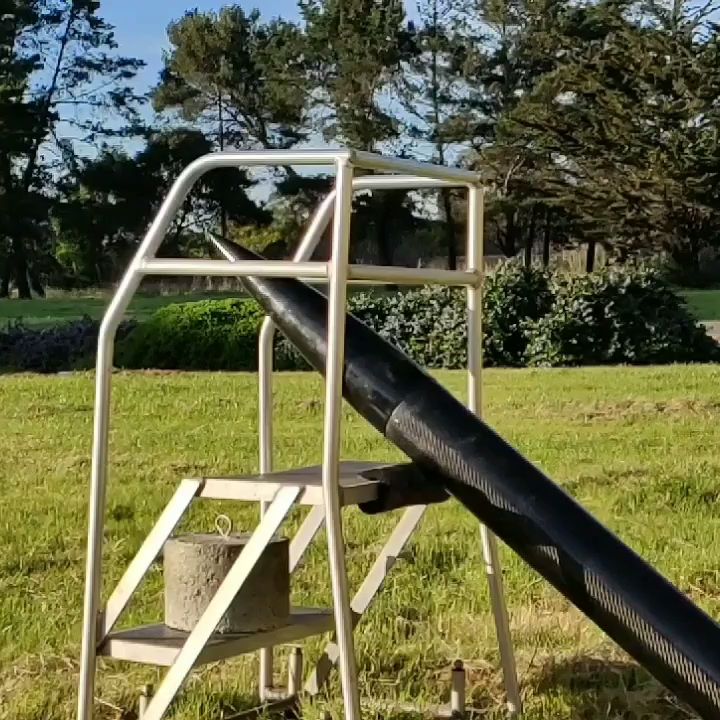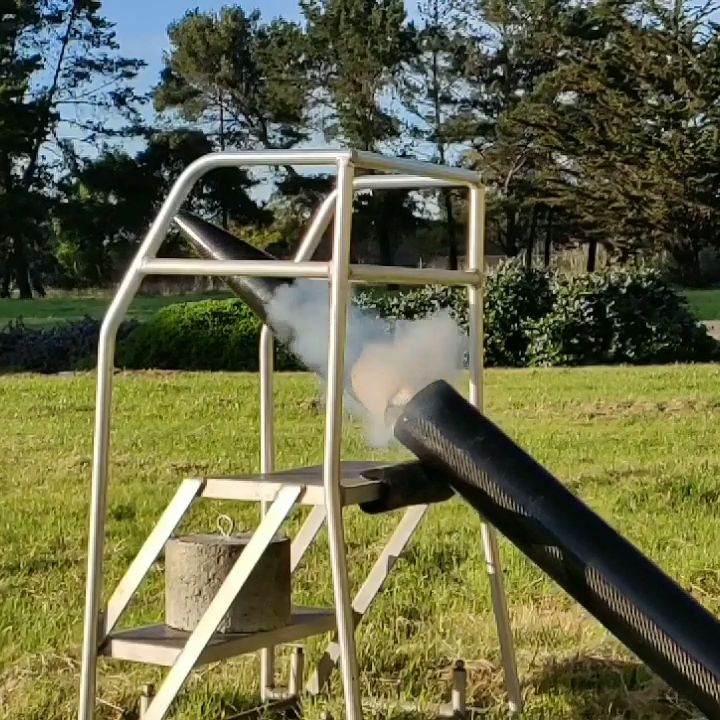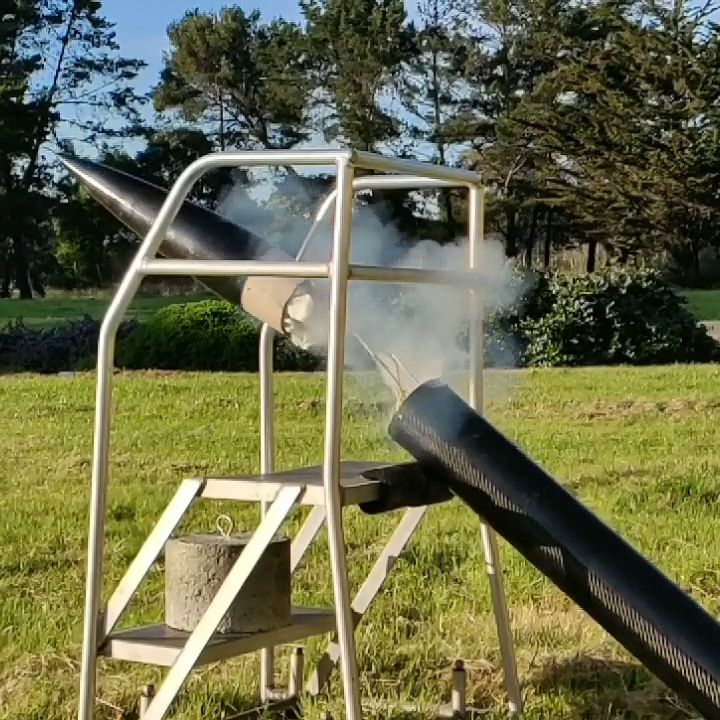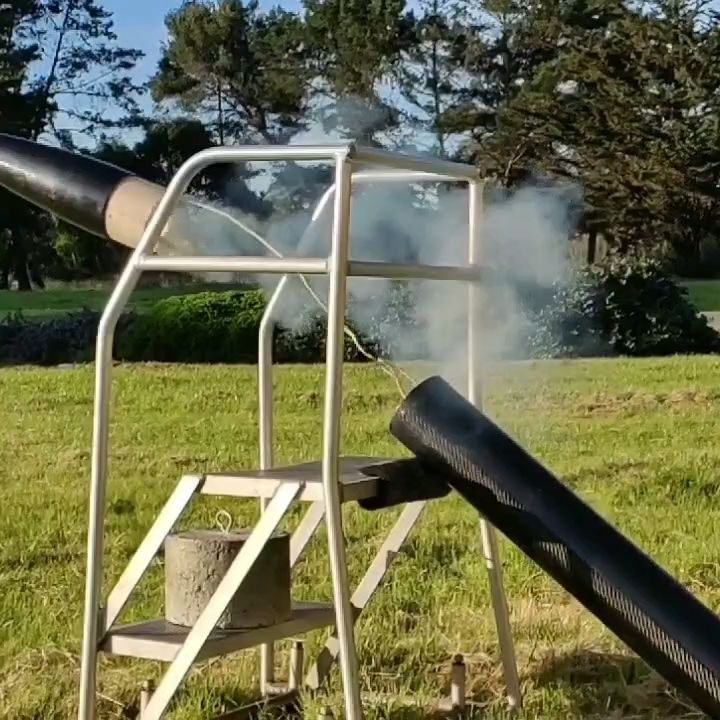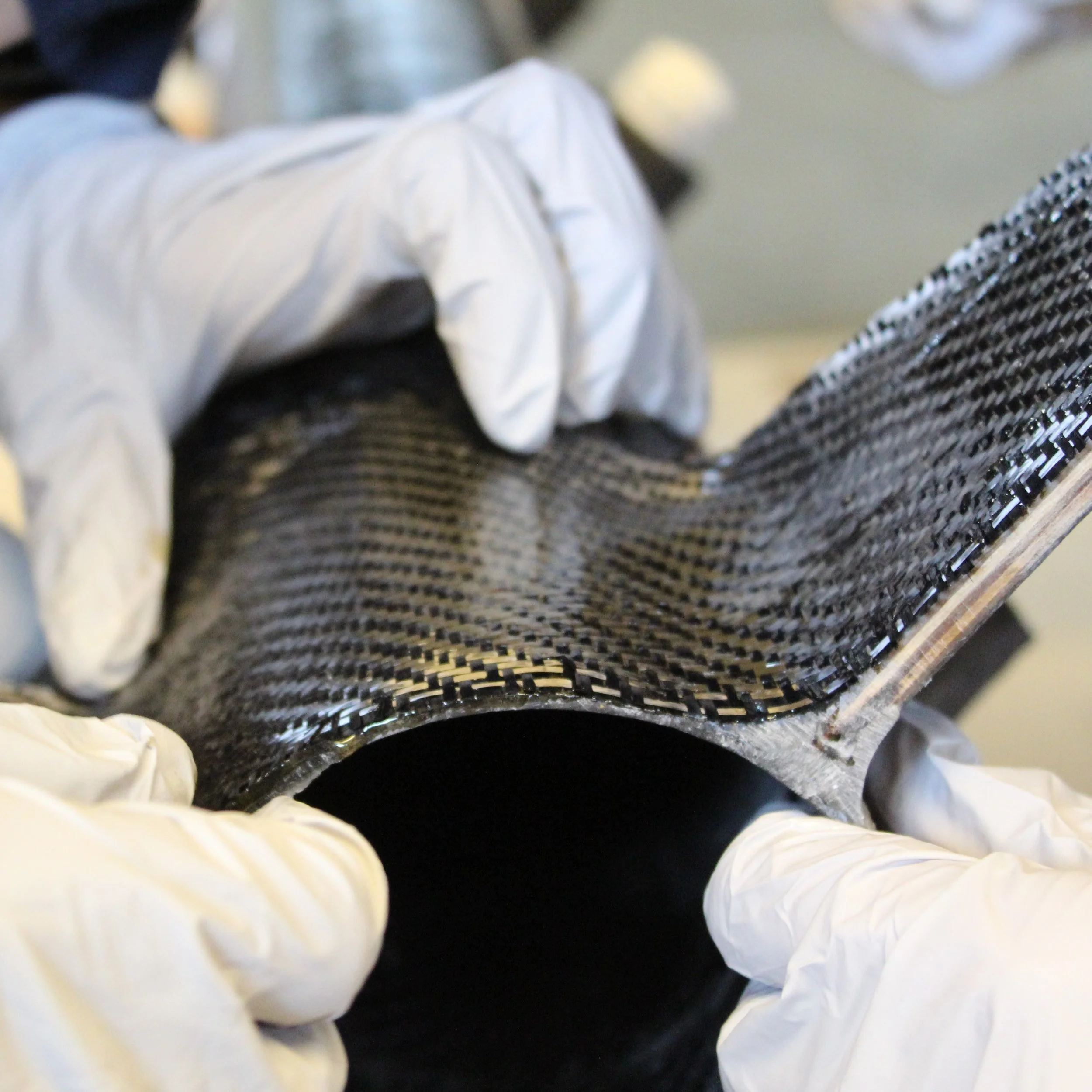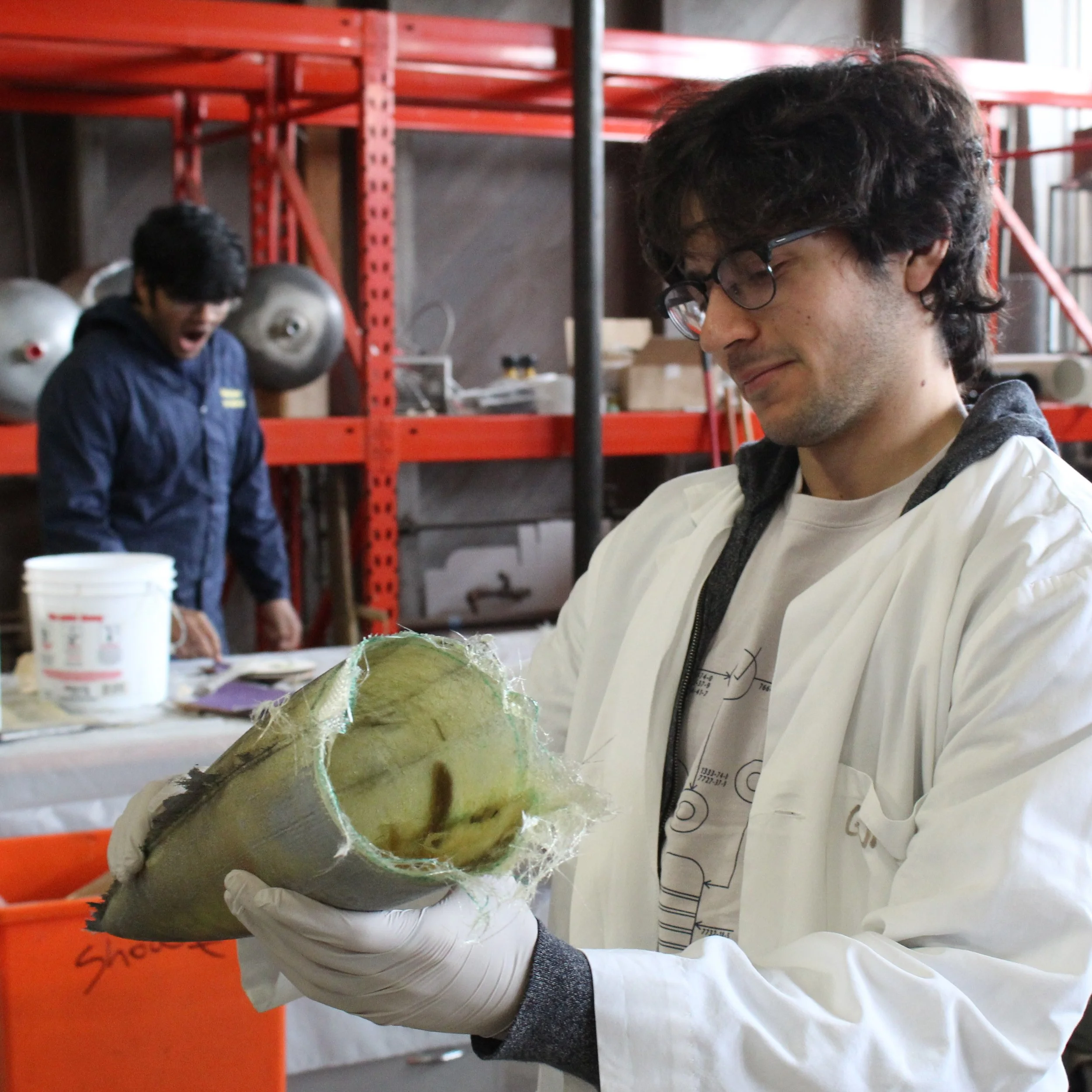LAD-2
LAD-Ember was the second rocket flown by SEB. LAD-Ember was designed to improve on the techniques pioneered in LAD-Spark and provide a foundation for future supersonic flights by SEB. LAD-Ember was designed to reach an altitude of 14,000 feet and a maximum speed of Mach 1.4.
LAD-Ember was a slightly smaller and lighter rocket than LAD-Spark with improved composite manufacturing techniques including tip-to-tip composite structures and an improved nose cone intended for transonic and supersonic flight. LAD-Ember also featured a chemical explosive parachute deployment system intended to correct drawbacks discovered in LAD-Spark’s cold-gas recovery system.
LAD-Ember launched from the Friends of Amateur Rocketry Launch Facility, Mojave Desert, CA in April of 2019. LAD-Ember reached an estimated altitude of 500 feet above ground level before suffering an electrical failure in the primary flight computer, which triggered an early parachute deployment as a safety measure. However, due to the high speed of the rocket and extreme aerodynamic forces on the vehicle at the time, the recovery system was torn free of the rocket, and the airframe impacted the ground at terminal velocity, resulting in the destruction of the aft section of the rocket.
14,000 Feet
Target Altitude
90 Inch
Rocket Height
1.4 Mach
target Speed
4.4 Inch
Rocket Diameter
PROJECT HIGHLIGHT
PARACHUTE DEPLOYMENT
After the unsuccessful recovery of LAD-SPARK, the recovery system for LAD-Ember was designed to be significantly more robust and powerful. The basic principles of the recovery system were to detect apogee reliably and fire an explosive charge at apogee to propel the nose cone away from the rest of the airframe at a relative velocity significant enough to deploy the parachute. To detect apogee and log the course of the flight, a custom flight computer based on an Arduino unit coupled to an accelerometer and barometer for redundancy was constructed. Explosive charges of crimson powder were precisely calibrated through a hardware rich test cycle and ultimately packaged in custom composite containment vessels. The aft section of the nose cone and the upper section of the fuselage were carefully sealed to form a closed compartment to house the parachute and the aforementioned charges. In order to ensure successful separation of the nose cone from the fuselage while retaining this seal, the overlapping areas were meticulously filled and sanded to ensure a perfect, low friction fit. The entire system was tested multiple times on the ground by sending simulated signals through the flight computer.
PROJECT HIGHLIGHT
Stronger Fins
LAD-Ember’s all-composite airframe featured filleted fins for added aerodynamicity and strength. Epoxy, strengthened with carbon fiber, served as a filler material for the 3/8” fillets and provided a strong bond between the fins and main airframe. After excess material was carefully sanded down, twill-woven carbon fiber was laid up by hand on top of the finished fillets as a final reinforcement and to ensure that the outward-facing surface was entirely smooth.
Applied Rounded Fillets
Reinforcing Filleted Fines with Carbon Fiber
PROJECT HIGHLIGHT
Improved Nosecone
Because of the higher target speed for LAD-Ember in comparison with LAD-Spark, we chose a Von Karman Ogive shape for Ember's nosecone. In a similar process to Spark's nose cone, we CNC-milled two negative half-cone molds out of medium-density fiberboard (MDF) and then did a seven-layer fiberglass layup on both molds. After joining the two half-cone layups together with an internal fiberglass layup, we put the finishing touch on it with high-grit sandpaper and a fresh layer of black paint.


